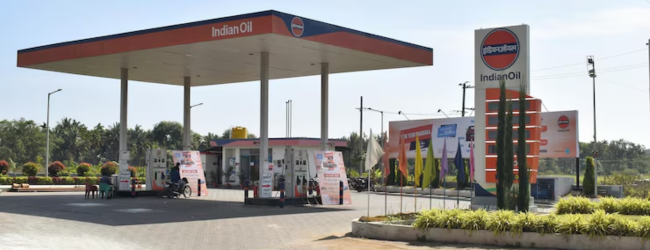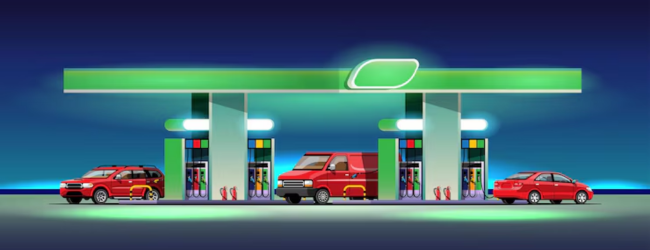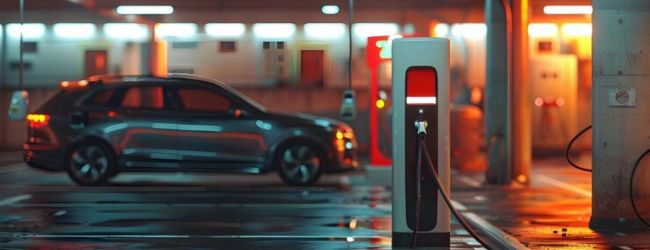Table of contents
- Benefits of Opening Petrol Pump in India?
- Different Types of Petrol Pump Dealerships
- Eligibility Criteria to Become a Petrol Pump Dealer
- Land Requirements for a Petrol Pump
- Petrol Pump Opening Cost in India
- How to Apply for a Petrol Pump Dealership (Step-by-Step)
- Licenses and Permits Required
- Understanding the Profit Margin
- Choosing the Right Location: Rural vs. Urban vs. Highway
- Which Dealership to Choose? (OMCs in India)
- Conclusion
- Frequently Asked Questions (FAQs)
India’s rapidly growing economy and increasing number of vehicles make the fuel retail business, commonly known as operating a petrol pump, an attractive venture. But how do you actually start one? What’s the petrol pump opening cost? Is it profitable?
This in-depth guide will walk you through everything you need to know, step-by-step, about setting up a petrol pump business in India in 2025. We’ll cover eligibility, land requirements, crucial investment details, profit margins, licensing, and much more.
Benefits of Opening Petrol Pump in India?
Despite the global push towards electric vehicles, the demand for petrol and diesel in India remains robust and is projected to grow in the coming years, especially with increasing vehicle ownership in Tier 2 and Tier 3 cities and rural areas. Here’s why it’s a compelling business:
- High Demand: Fuel is an essential commodity. With millions of vehicles on Indian roads, there’s a constant and consistent demand.
- Essential Service: Petrol pumps are vital infrastructure, making the business relatively stable even during economic downturns.
- Potential for Good Returns: While the investment is significant, a well-located and well-managed petrol pump can offer substantial returns.
- Brand Association: Partnering with established Oil Marketing Companies (OMCs) like IOCL, BPCL, or HPCL lends credibility and brand recognition.
- Ancillary Business Opportunities: Petrol pumps often host other businesses like convenience stores, ATMs, pollution check centres, service stations, and food courts, creating additional revenue streams.
Highlight: Operating a petrol pump is more than just selling fuel; it’s running a vital service hub with multiple income possibilities.
Different Types of Petrol Pump Dealerships

In India, petrol pumps primarily operate under these models:
- Dealer Owned Dealer Operated (DODO): This is the most common model. Here, the individual (dealer) owns or leases the land, invests in the construction and infrastructure, and operates the pump. The OMC supplies the fuel and provides brand support.
- Company Owned Dealer Operated (CODO): In this model, the land and infrastructure are owned by the OMC. They appoint a dealer who invests in the working capital (fuel stock, staff salaries, etc.) and operates the outlet, earning a commission. The investment required from the dealer is generally lower than DODO.
- Company Owned Company Operated (COCO): These outlets are entirely owned and operated by the OMC itself, usually used as flagship stores or for training purposes. These are not typically open for private dealerships.
Most opportunities advertised for new dealers fall under the DODO or CODO categories.
Eligibility Criteria to Become a Petrol Pump Dealer
While specific criteria can vary slightly between OMCs and the type of dealership (rural vs. urban), here are the general requirements:
- Nationality: Must be an Indian Citizen.
- Age: Typically between 21 and 60 years (age relaxations may apply for certain categories like freedom fighters under specific schemes).
- Educational Qualification: Minimum 10th Standard (SSC) pass from a recognized board. For urban dealerships, sometimes a 12th Standard (HSC) or graduation might be preferred or required.
- Financial Soundness: You need to demonstrate the capacity to invest. The required amount varies significantly based on the location (rural/urban/highway) and type (DODO/CODO). This usually ranges from ₹25 Lakhs to over ₹2 Crores (more on this in the cost section). Funds can be in various forms like savings accounts, shares, bonds, mutual funds, etc.
- Land: This is a crucial requirement, especially for DODO dealerships. You must either own suitable land or have it on a long-term lease (typically around 30 years).
- No Criminal Record: The applicant should not have been convicted of any criminal offence involving moral turpitude or economic offences.
- Other: Should not be an employee or family member of an existing OMC employee in certain roles. Specific reservation criteria (SC/ST, OBC, Women, Physically Handicapped, Freedom Fighters, Sportspersons, etc.) are often applicable as per government guidelines.
Highlight: Always refer to the specific advertisement brochure released by the OMC for the exact eligibility criteria for a particular location or scheme.
💡 Pro Tip: If you want to start a business but have too many doubts, connect with a business expert from Boss Wallah for guidance – https://bw1.in/1116
Land Requirements for a Petrol Pump

Land is often the biggest prerequisite and challenge. Key considerations include:
- Location: Must be easily accessible, visible, and preferably on a highway or a major road with significant traffic flow. Proximity to intersections or commercial hubs is advantageous.
- Size:
- Highways/Major Roads: Typically requires a larger plot, around 800 sq meters to 1200 sq meters or more, with adequate frontage (e.g., 35-40 meters).
- Urban/Semi-Urban Areas: Slightly smaller plots might be acceptable, but accessibility is key.
- Rural Areas: Requirements might be less stringent, but the plot still needs to be accessible and meet safety norms.
- Ownership/Lease:
- Owned Land: Must have clear title documents in the applicant’s name (or spouse/parents, sometimes accepted with consent affidavits).
- Leased Land: A registered lease deed for a long duration (minimum 19 years 11 months, often closer to 30 years) is required at the time specified by the OMC (usually after initial selection).
- Legal Status: The land should ideally be non-agricultural or converted for commercial use. It must be free from encumbrances, liens, or legal disputes.
- Accessibility: Must allow for safe entry and exit of vehicles without obstructing traffic flow. Necessary permissions from highway authorities (NHAI, State PWD) or local bodies are mandatory.
Petrol Pump Opening Cost in India
This is the most critical factor for aspiring dealers. The petrol pump opening cost varies significantly based on several factors: location (rural vs. urban/highway), type of dealership (DODO vs. CODO), land ownership status, and the specific OMC.
Here’s a breakdown of the major cost components:
Application Fee: A non-refundable fee paid when submitting the application. This is usually nominal, ranging from ₹1,000 to ₹10,000 depending on the category (rural/urban) and applicant type (general/SC/ST/etc.).
Security Deposit: A significant amount deposited with the OMC upon selection.
- Fixed Fee: This is often specified in the advertisement. It can range from ₹5 Lakhs to ₹25 Lakhs or more, depending on the location and category. This is generally refundable without interest upon termination or resignation of the dealership, provided there are no outstanding dues.
- Bidding Amount (for certain prime locations): Sometimes, prime locations are allocated through a bidding process, where the highest bidder (above a base amount) gets the dealership. This amount is also typically treated as a refundable security deposit.
Land Cost / Lease Rent:
- Owned Land: While you don’t pay rent, the market value of the land represents a significant opportunity cost or initial investment.
- Leased Land: Requires upfront payment of lease rent or advances as per the agreement, plus ongoing rental costs. This can be a substantial part of the petrol pump opening cost if the land is leased in a prime location.
Construction & Infrastructure Cost (Primarily for DODO): This includes:
- Building the sales office, storeroom, toilets.
- Constructing the canopy over the dispensing units.
- Developing the driveway, boundary wall, and yard surfacing.
- Installation of underground fuel storage tanks.
- Setting up electrical connections, lighting, and safety equipment (fire extinguishers, sand buckets).
- Estimated Cost: ₹30 Lakhs to ₹1 Crore+, depending on the size, location, and specifications mandated by the OMC.
Equipment Cost: Dispensing units (petrol and diesel pumps), automation systems, air filling machine, generator set (backup power). Some of this might be provided or financed by the OMC under certain schemes, but the dealer often bears a significant portion.
Licensing Fees: Costs associated with obtaining various permits and No Objection Certificates (NOCs) from authorities like PESO, District Collector, PWD, Police, Pollution Control Board, etc. (See licensing section below). This can run into several lakhs.
Working Capital: Funds required for the initial stock of petrol and diesel, staff salaries, utility bills, and other day-to-day operational expenses. This could range from ₹10 Lakhs to ₹25 Lakhs or more, depending on the expected sales volume.
Total Estimated Petrol Pump Opening Cost:
- Rural Areas (DODO): ₹50 Lakhs – ₹1.5 Crores (assuming land is owned or leased reasonably).
- Urban/Highway Areas (DODO): ₹1.5 Crores – ₹3 Crores+ (highly dependent on land cost and construction).
- CODO Dealerships: Investment is lower as land and major construction are handled by the OMC. The dealer primarily invests in the security deposit and working capital, typically ranging from ₹30 Lakhs to ₹70 Lakhs.
Highlight: These figures are estimates as of early 2025. The actual petrol pump opening cost can vary significantly. Always refer to the official OMC advertisement and conduct thorough due diligence for the specific location.
How to Apply for a Petrol Pump Dealership (Step-by-Step)

The process generally involves these steps:
Monitor Advertisements: OMCs (IOCL, BPCL, HPCL, etc.) periodically release advertisements in leading national and regional newspapers and on their official websites, inviting applications for new petrol pump dealerships at specific locations.
Identify Location & Check Eligibility: Find a location mentioned in the advertisement for which you meet the eligibility criteria (age, education, finance) and, crucially, for which you can arrange the required land.
Arrange Land Documents: If you own the land, get all title documents ready. If leasing, finalise the lease agreement terms (the registered lease deed might be required later, after initial selection).
Submit Application: Apply either online through the OMC’s portal or offline by submitting the physical form, as specified in the advertisement, along with the application fee and required documents (proof of identity, address, age, education, financial documents, land documents/consent).
Selection Process:
- Scrutiny: Applications are checked for completeness and eligibility.
- Interview/Evaluation: Shortlisted candidates are typically called for an interview or evaluation based on various parameters (financial capacity, business acumen, land suitability).
- Field Verification: The OMC officials will visit the proposed land site to assess its suitability and verify the details provided.
Letter of Intent (LOI): If selected, the OMC issues an LOI. This is a preliminary confirmation, subject to fulfilling certain conditions within a specified timeframe.
Fulfill LOI Conditions: This involves depositing the security amount, obtaining all necessary licenses and NOCs, and completing the construction of the petrol pump as per OMC standards (for DODO).
Dealership Agreement: Once all LOI conditions are met satisfactorily, the final dealership agreement is signed between the applicant and the OMC.
Commissioning & Training: The OMC provides necessary training, conducts final inspections, supplies the initial fuel stock, and the petrol pump is commissioned for operations.
Highlight: The application and selection process is competitive and meticulous. Ensure all documents are accurate and readily available.
Licenses and Permits Required
Obtaining the necessary licenses is a critical and often lengthy process. Key approvals include:
- PESO License: Approval from the Petroleum and Explosives Safety Organisation (PESO) is mandatory for storing and handling petroleum products.
- NOC from District Collector/Magistrate: A No Objection Certificate is required from the local administrative head.
- Police Commissioner/SP NOC: Verification and NOC from the local police authorities.
- PWD/Highway Authority Approval: For access permission if the pump is located on a highway or major road.
- Municipal Corporation/Local Body Approval: For construction plans and site approval.
- Electricity Board Sanction: For power connection.
- Pollution Control Board NOC: Consent to establish and operate.
- Weights and Measures Department Stamping: For verifying the accuracy of dispensing units.
- Retail Selling License: As applicable locally.
- GST Registration: For tax purposes.
Highlight: Engaging a local consultant experienced in obtaining these licenses can be beneficial, though it adds to the cost.
Understanding the Profit Margin

Petrol pump dealers do not set the fuel price; it’s determined by OMCs based on global crude prices, taxes, etc. Dealers earn a fixed commission per litre of petrol and diesel sold.
- Dealer Commission: As of early 2025, the commission is roughly:
- Petrol: ₹3 – ₹3.8 per litre
- Diesel: ₹2 – ₹2.5 per litre
- (Note: These figures are indicative and can be revised by OMCs periodically).
- How Profit is Calculated: Gross Profit = (Litres of Petrol Sold * Commission per litre) + (Litres of Diesel Sold * Commission per litre). Net Profit = Gross Profit – Operating Expenses.
- Operating Expenses: Include staff salaries, electricity bills, water charges, maintenance costs, loan EMIs (if any), bank charges, statutory fees, insurance, and potential evaporation/handling losses.
- Factors Affecting Profitability:
- Sales Volume: This is the single most important factor. Higher sales volume directly translates to higher gross profit.
- Location: Prime locations naturally attract more customers.
- Operational Efficiency: Keeping operating costs low maximises net profit.
- Additional Services: Revenue from convenience stores, servicing, air/water facilities significantly boosts overall profitability.
Highlight: While the per-litre commission seems small, high sales volume (thousands of litres per day) makes the business viable and profitable. A pump selling 100 kilolitres (1,00,000 litres) of fuel per month could generate a gross commission of ₹2.5 to ₹3.5 Lakhs, from which operating expenses must be deducted.
ALSO READ | How to Get a Business Loan for a Startup in India? A Complete Guide
Choosing the Right Location: Rural vs. Urban vs. Highway
The location choice impacts investment, competition, and potential volume:
- Rural Locations:
- Pros: Lower land cost/lease rent, potentially lower initial investment, less competition, may have specific government schemes or relaxed norms.
- Cons: Potentially lower sales volume compared to urban/highway locations, dependence on the local agricultural economy.
- Urban Locations:
- Pros: High population density, potential for high sales volume, better access to ancillary business customers (shops, ATMs).
- Cons: Very high land costs, intense competition, and traffic congestion issues affecting accessibility.
- Highway Locations:
- Pros: Potential for very high sales volume (especially diesel due to trucks), less direct competition compared to dense urban areas, attracts transient customers.
- Cons: High land cost, stringent access norms from highway authorities (NHAI/PWD), investment in amenities (toilets, rest areas) often required, and requires significant frontage.
Highlight: Conduct thorough traffic surveys and feasibility studies before finalising a location. Analyse existing competition and future development plans for the area.
Which Dealership to Choose? (OMCs in India)
The major players offering petrol pump dealerships in India are:
- Public Sector Undertakings (PSUs):
- Indian Oil Corporation Ltd (IOCL)
- Bharat Petroleum Corporation Ltd (BPCL)
- Hindustan Petroleum Corporation Ltd (HPCL)
- (These three PSUs hold the largest market share)
- Private Companies:
- Reliance BP Mobility Limited (RBML – Jio-BP)
- Nayara Energy (formerly Essar Oil)
- Shell India
Factors to Consider:
- Brand Reputation & Market Share: PSUs generally have wider acceptance and network.
- OMC Support: Training, technical assistance, marketing support.
- Commission Structure: While largely standardised for PSUs by the government, minor variations or incentives might exist. Private players might have different structures.
- Specific Schemes/Locations: Your choice might be dictated by which OMC is advertising for the location you are interested in.
ALSO READ | How to Apply for GST Number: Registration Process, Fees & More
Need Expert Guidance?
Starting a business can be challenging, but you don’t have to do it alone! At Boss Wallah, our 2,000+ business experts are ready to provide valuable insights and guidance. Whether you need help with marketing, finance, sourcing, or any other area of any business, our business experts are here to help you succeed
Confused about Which Business to Start?
Want to start your own business but unsure which one to choose? Explore Boss Wallah, where you’ll find 500+ courses by successful business owners, featuring practical, step-by-step guides on starting and growing various businesses.
Find your perfect business idea today
Conclusion
Starting a petrol pump in India is a significant undertaking that requires substantial capital, meticulous planning, and perseverance through the application and licensing stages. The petrol pump opening cost is a major consideration, heavily influenced by location and land status.
However, given the consistent demand for fuel and the potential for adding lucrative ancillary services, a well-managed petrol pump in a strategic location can be a highly rewarding and profitable long-term business. Careful research, adherence to OMC guidelines, securing the right location, and efficient operations are the keys to success in this competitive industry.
Frequently Asked Questions (FAQs)
1. What is the minimum investment required to open a petrol pump in India?
The minimum investment varies greatly. For a rural DODO pump where you own the land, it might start around ₹50-70 Lakhs (including security deposit, basic construction, licenses, working capital). For urban/highway locations or leased land, the petrol pump opening cost can easily exceed ₹1.5 – ₹2 Crores. CODO dealerships require less capital, typically starting from ₹30-40 Lakhs.
2. How much profit can I make from a petrol pump?
Profit depends primarily on fuel sales volume and operational efficiency. Dealers earn a fixed commission per litre (approx. ₹3-3.8 for petrol, ₹2-2.5 for diesel). A pump selling 100 KL (1 lakh litres) monthly might generate ₹2.5-₹3.5 Lakhs in gross commission. Net profit is derived after deducting operating costs (salaries, electricity, maintenance, etc.). Ancillary services significantly add to overall profitability.
3. Is owning land compulsory to apply for a petrol pump?
Not necessarily owning, but having land available is crucial. You either need to own a suitable plot or have a firm commitment for a long-term lease (typically 20-30 years) for a suitable plot. Land documents (ownership proof or lease agreement offer) are required during application or selection.
4. How long does it take to start a petrol pump after applying?
The entire process from application release to commissioning can take anywhere from 6 months to 2 years, or sometimes even longer. This depends on the OMC’s processing speed, the time taken for selection, obtaining all licenses (which can be lengthy), and completing construction.
5. Can I get a bank loan to cover the petrol pump opening cost?
Yes, banks do provide loans for setting up petrol pumps, considering it a viable business model. However, banks typically require the applicant to contribute a significant portion (margin money) of the total project cost (often 20-40%). The loan amount sanctioned depends on the project viability, applicant’s financial standing, and collateral security offered.
6. How are petrol pump dealerships allotted? Is there a draw or bidding?
Allotment methods vary. For many locations, selection is based on evaluation criteria (land, finance, capability) and interviews. For certain high-potential locations (‘A’ sites), OMCs might use a bidding process where applicants bid a refundable security deposit amount, and the highest bidder (meeting eligibility) is selected. Sometimes, a draw of lots might be used if multiple applicants score identically in the evaluation.
7. What is the minimum education required to open a petrol pump?
Generally, the minimum qualification is a pass in the 10th Standard (SSC). However, for dealerships in urban areas or under certain schemes, a 12th Standard (HSC) pass or graduation might be required or preferred. Always check the specific OMC advertisement.
8. Is the petrol pump business still profitable with the rise of Electric Vehicles (EVs)?
While EVs are growing, India’s overall vehicle population (including ICE vehicles) is also increasing. Demand for petrol and diesel is expected to remain strong for many years, particularly for commercial vehicles and in non-metro areas. Furthermore, petrol pumps are evolving into energy hubs, potentially incorporating EV charging stations and other services, ensuring future relevance.


